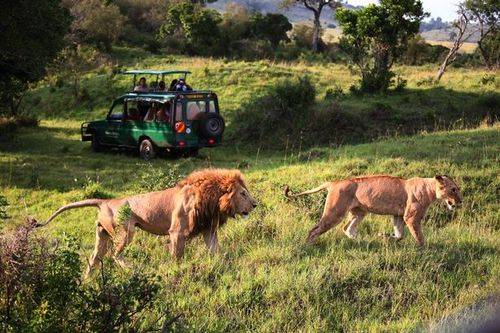Lion Attack in Nairobi: 14-Year-Old Girl Killed While Another Teen Sees in Horror
In a heart-rending incident that has left a community in the dark, caused widespread shock and concerns across the country, a 14-year-old girl was brutally murdered by a lioness on the outskirts of Nairobi National Park in Kenya. The attack happened early on April 19, 2025, in a residential part of the park's southern boundary, where wildlife tends to stray out due to the absence of a safe perimeter.
The victim, who was a vibrant and jovial teen, was said to be inside her family's compound when the lioness broke through a flimsy fence. Her friend, a young girl around her age, helplessly saw the wild animal strike. She escaped and went to alert nearby authorities, but when assistance reached her, the lion had already disappeared into nearby bush, while the girl's body was found near the Mbagathi River with serious injuries.
This tragic accident highlights the increasingly problematic interface between wildlife and urban development surrounding Nairobi National Park. In contrast to most other sections in the park, there is no functional fence along the southern edge, allowing wild animals — lion included — to cross into surrounding residential areas in search of food and water, particularly in periods of drought.
Locals are saying they have made lion sighting reports in the past, but it is one of the deadliest recent ones. Residents have also been complaining about what they think is a lack of action by wildlife authorities. Many think their complaints had been disregarded when they live in constant fear of animal incursions.
Wildlife scientists speculate that the lioness involved in the attack may have been driven off her home hunting grounds due to dwindling prey and encroaching development. Rapid urbanization around the park has severely reduced the natural buffer zone, placing humans and predators precariously close to each other.
Conservationists point out that while protecting endangered species is a priority, this has to be done in conjunction with the safety and well-being of nearby communities. The Kenya Wildlife Service has launched a search for the lioness, with all resources focused on locating and relocating the animal to a safer and more secure area within the park.
Since the attack, there has been a growing call for the construction of a full perimeter fence around Nairobi National Park. Other calls are to put in place community education programs on coexisting with wildlife, the installation of protective predator systems, and more robust emergency response measures in high-risk locations.
Psychologists and trauma counselors have been dispatched to help the bereaved family of the deceased and the traumatized surviving teenager, who is also said to be severely traumatized by the incident. Community members have rallied behind the grieving family, coordinating memorial services and fundraising drives to assist in paying for funerals.
The government has promised to investigate the incident thoroughly and consider further measures to prevent future tragedies. But for residents on the periphery of Nairobi National Park, the fear is constant — a haunting reminder that the wild is at hand.
As Kenya tries to reconcile human development and conservation, this tragic loss is a salutary wake-up call: unless better protection is instituted, the edge between wildlife and human will be increasingly pushed — sometimes with lethal consequences.


